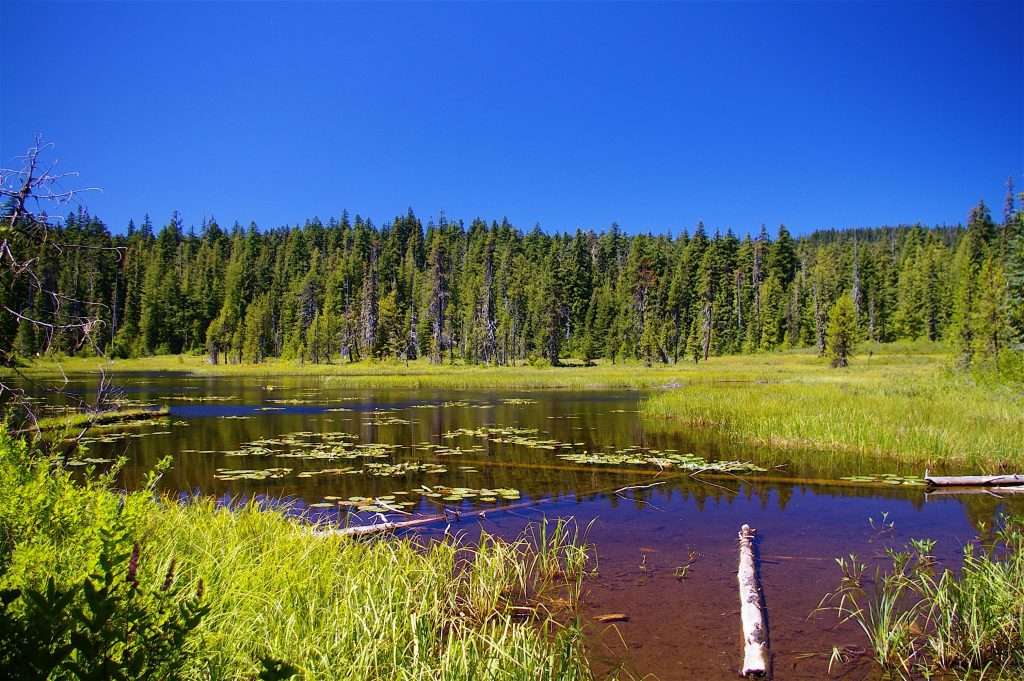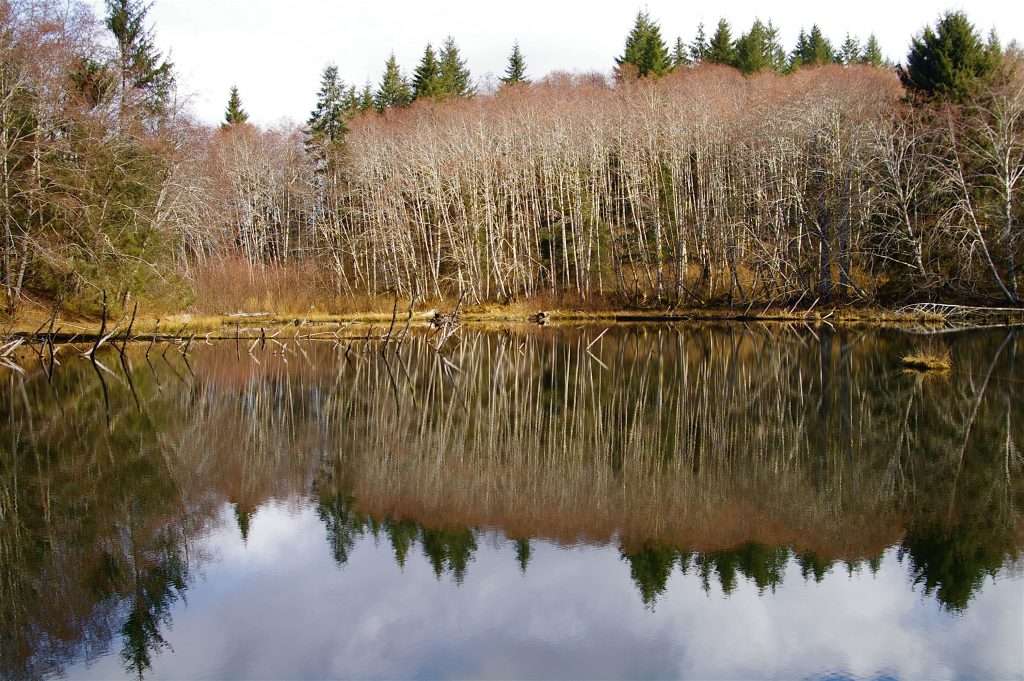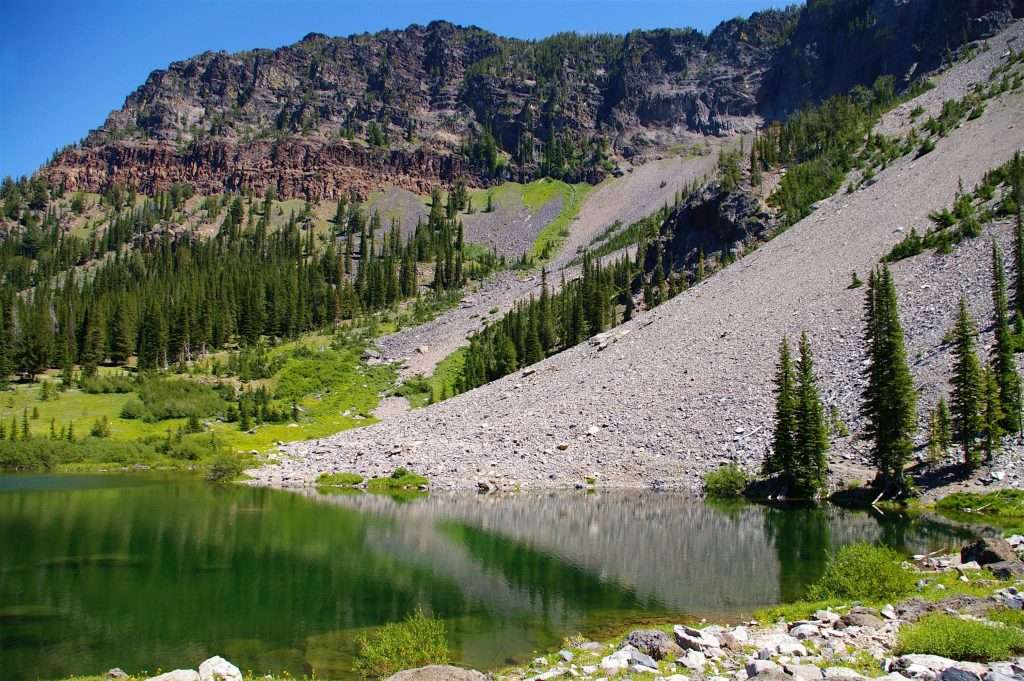By Cheryl Hill, Board Member, Trailkeepers of Oregon If you find yourself visiting the Painted Hills unit of the John Day Fossil Beds National Monument and you want a longer hike than those short trails provide, Sutton…
By John Sparks, Volunteer, Trailkeepers of Oregon
It’s often a challenge to find a very short but interesting destination for young children around three to seven years old.
Fortunately there are numerous mountain lakes which are a good distance from a road yet not too far for even the youngest of hikers. You can entertain your young charges along the way by telling stories, pointing out delicate plants, and identifying the sounds of the forest. Once at the lake, you can splash around in the shallows, search for lounging newts, and sit quietly until small trout glide by.

Secluded Anvil Lake in the Mount Hood National Forest. (Photo by John Sparks)
Black Wolf Meadows–Anvil Lake Hike
In the summer months, the boggy expanses of the Mount Hood National Forest’s Black Wolf Meadows and the shoreline of little Anvil Lake exhibit a wonderful variety of marsh wildflowers in a secluded and little-visited setting. The short trail (1.3 miles) that accesses these points has a long history: It was once part of an Indian route that connected the Cascade crest with High Rock and then traversed the ridge line, where Abbot Road now runs, before dropping down to the vicinity of the current city of Estacada. The shoreline of Anvil Lake is brushy, but the blueberries that ripen here in August are prime!

Bloom Lake in winter, with a reflection of shoreline alders. (Photo by John Sparks)
Bloom Lake Hike
Bloom Lake nestles above the South Fork Quartz Creek in the Coast Range, a short one-and-a-half-mile hike uphill and an excellent diversion from the heavy beach traffic on Highway 26. The trail mostly follows old logging roads in the Clatsop State Forest, with a foot trail fashioning a loop around the lake itself. Where slides have obscured the original trail, recent users have created an easy-to-follow path. The forest here is secondary with a few old trees, both the coastal lowland species like Sitka spruce and western hemlock as well as some higher elevation conifers such as noble and silver fir. Quietly observe the lake for signs of beaver activity, and be prepared for some boggy spots!

The high ridge above Little Strawberry Lake. (Photo by John Sparks)
Little Strawberry Lake Hike
At 6.5 miles round-trip, this popular excursion is for your elementary-age children. The route passes Strawberry Lake, the largest lake in the Malheur National Forest’s Strawberry Mountain Wilderness. (The 1.2 miles in to Strawberry Lake would be good for younger kids.) Strawberry Lake was created only about 1,000 years ago by a landslide that dammed Strawberry Creek. Heading on to Little Strawberry Lake, you’ll first pass 50-foot Strawberry Falls. Little Strawberry Lake sparkles below high ramparts that retain large snowfields into the summer. The twin prominences of the Rabbit Ears rear above the lake, while to your right is the summit of Indian Spring Butte. You may spot mountain goats on the slopes above or a deer grazing near the lake. From the far end of the lake, you’ll be able to see 9,038-foot Strawberry Mountain. Wildflowers, including monkshood, arrowleaf groundsel, and lupine, abound during the summer.
John Sparks: john.sparks@trailkeepersoforegon.org
